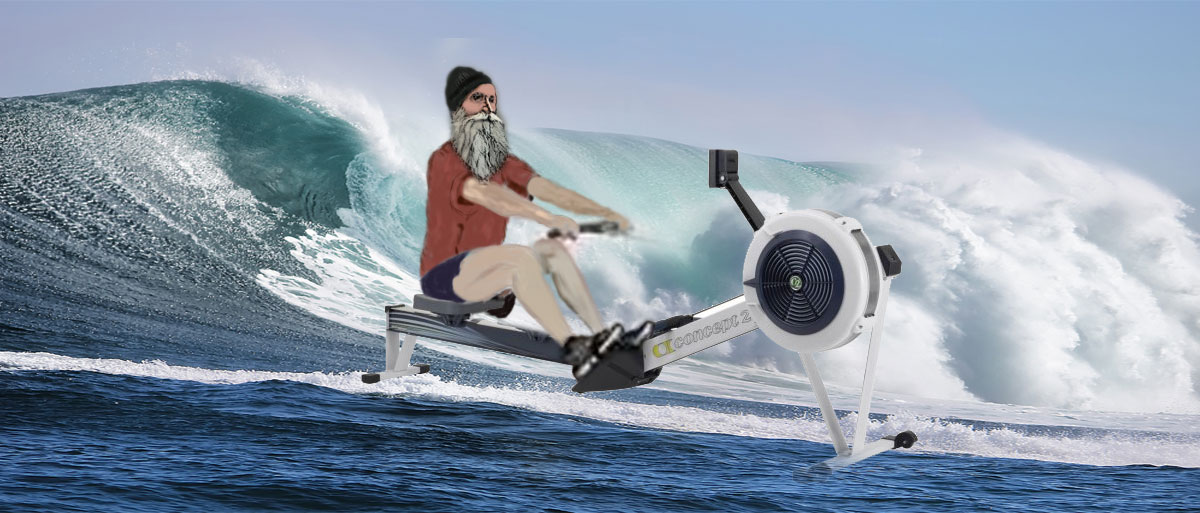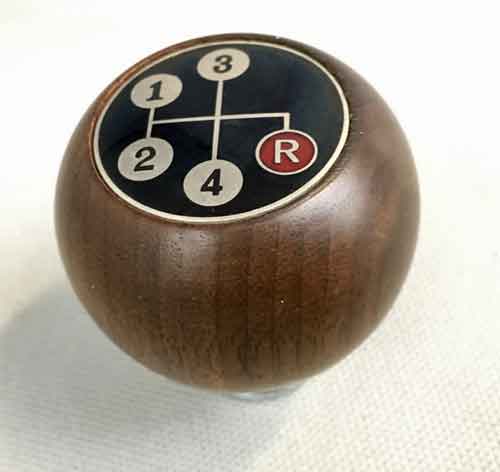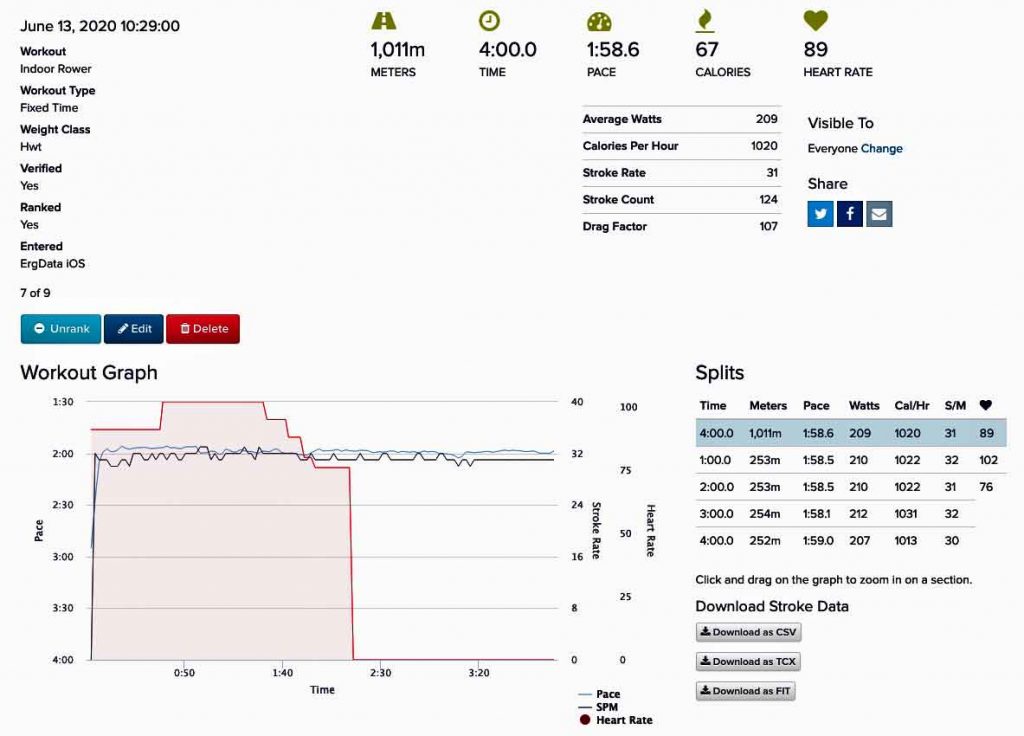
Blog posts have become less frequent and at the start of today I once again wasn’t intending to write one but today’s heart rate behavior was strange enough that I decided to say a little about it and also mention my vague theory as to why two heart monitors were in such radical disagreement.
For today’s rowing session I wore two heart monitors. One was a Garmin chest strap which detects periodic electric pulses from the heart. The other was a Scosche armband which uses lights instead of an electric pulse detector and which detects periodic variations in reflected light for pulse measurements.
The Garmin chest strap gave a much lower BPM reading than the Scoshe armband. By that I mean the Scosche displayed a heart rate which was between 140-160 BPM most of the time while the Garmin was giving a reading ranging from 30 BPM to as high as around 125 BPM. For much of the time the Scosche heart strap reading was 200% to 300% higher than that from the Garmin heart strap.
I experienced atrial fibrillation all of last night and it persisted to and through the rowing session so that was probably the main reason for the strange difference in heart rate readings. My vague theory as to why the big difference is: I assume the Garmin uses an algorithm that chooses the strongest periodic electrical signals which are also above a certain level and then averages those. When atrial fibrillation is happening the heart beats a lot faster than normal but some of its beats are stronger, others are noticeably weaker (if a finger is held on the wrist to feel the pulse) and heart rate varies & wobbles with incoherent rhythms. Therefore since the Garmin was (I assume) paying attention to only the strongest signals and ignoring weaker signals, that’s my opinion as to why it resulted in a much lower heart rate display: it wasn’t actually counting each and every beat of the heart, only the stronger ones.
Contrastingly the Scoshe heart strap doesn’t detect or measure electrical signals at all. Instead it only detects periodic variations in reflected light as the blood flow speeds up and slows down with each beat, no matter how strong or weak each heartbeat is. So based on that assumption that’s my opinion as to why the Scosche heartstrap always shows a higher heart rate than the Garmin, when atrial fibrillation is happening: It “sees” more heartbeats because it counts not only the heartbeats associated with the stronger electrical pulses that the Garmin counts, but also the heartbeats associated with the weaker electrical pulses which the Garmin does not count.
Screenshots below show heart rate graphs from both the Garmin and Scoshe heart straps so you can see a bit of what I’m trying to write about. Below those two sets of screenshots is another screenshot of a typical ECG reading of what my heart rate is doing right after I finish a workout session on the rowing machine. I don’t discern any particular heart rate in that graph, do you? Based on a non-mathematical analysis of that graph I’d be at a complete loss as to what heart rate should be displayed by any heart rate monitor.
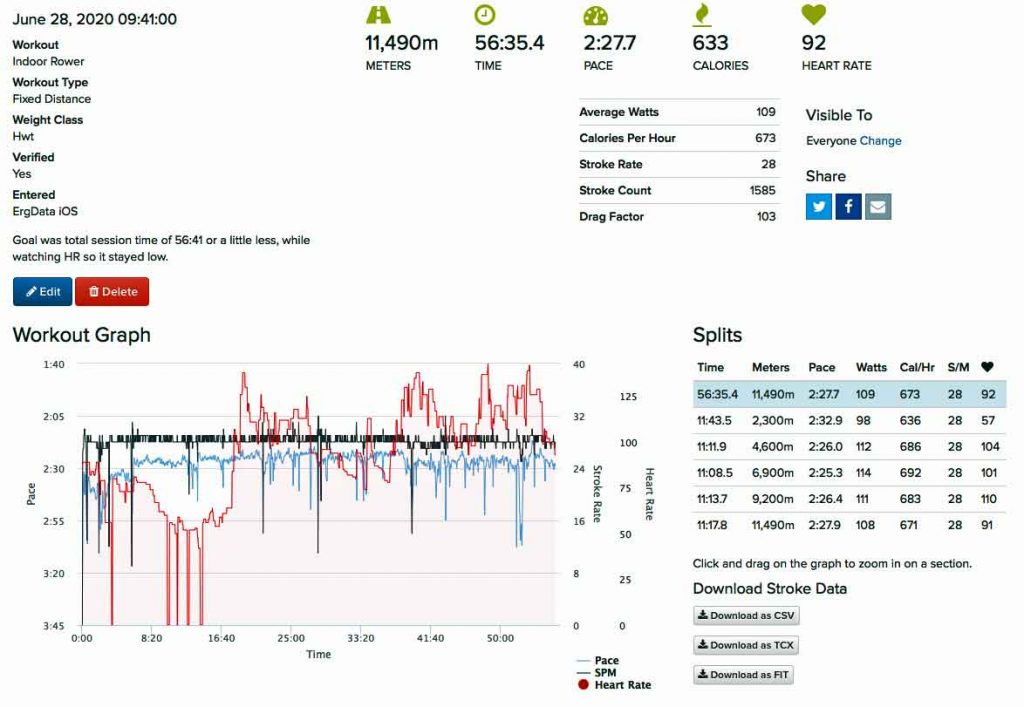
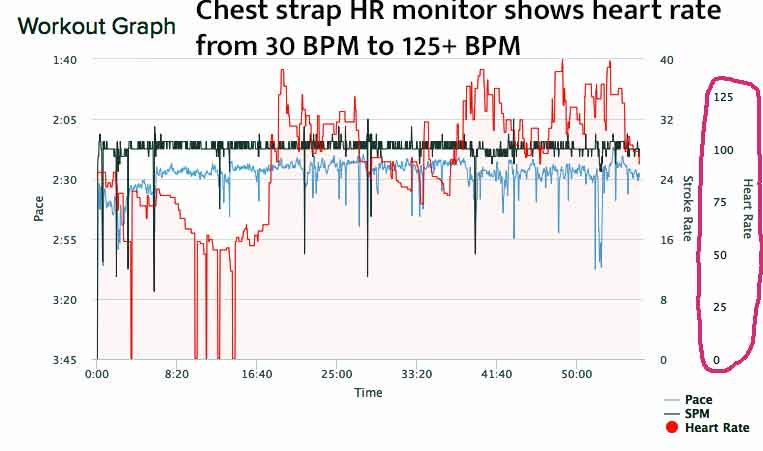

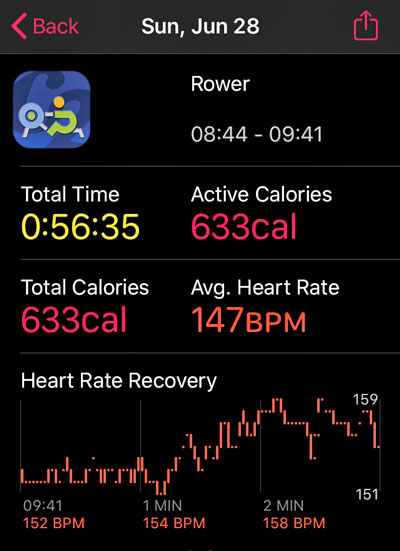
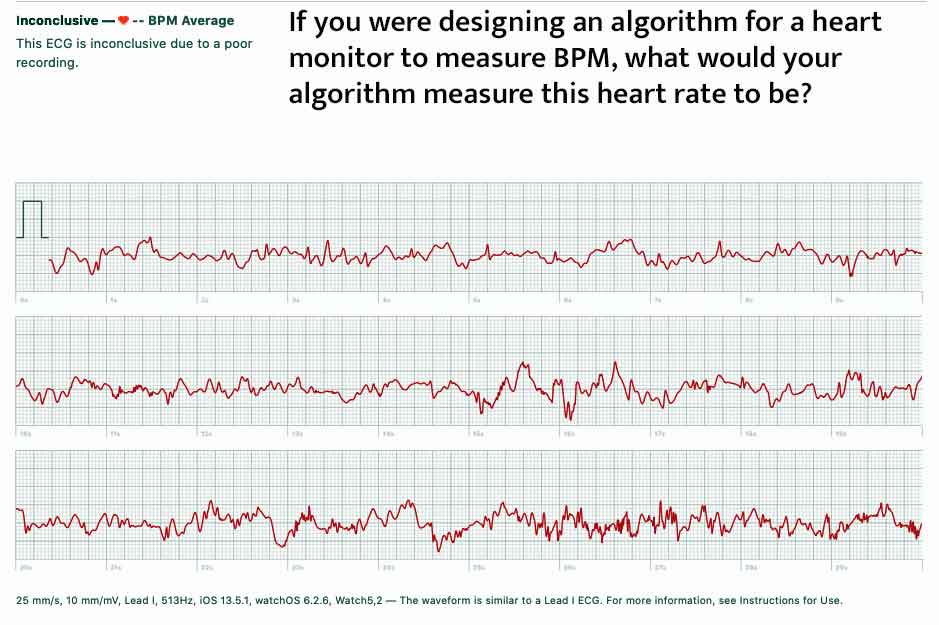
Though there hasn’t been a blog post made since June 25th, there have been daily workout sessions from then through today. Any session can be seen via this: link to the online logbook. To see any session’s data and interactive graph click the corresponding “+” sign in the “Action” column for that session.
Happy rowing to you!
